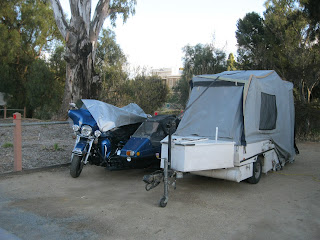Friday 3rd August
Last night Bob captured this photo of the
church nearby. To me this picture is a representation of mystery, sacredness
and beauty.
As we left the van park this morning a
fellow traveller had loaded up ready to go as well. The difference between his
rig and ours is that his tow vehicle is a motor bike with sidecar. I guess we have to expect the unexpected - and this surely fitted into that category.
After travelling all of about 30 km we came
across a little town called Mintaro, known for being a staging point for the
bullock teams taking copper from Burra to Port Wakefield and also as South
Australia’s leading producer of slate. A little tea house was beckoning and we
were so glad to warm our bottoms in front of a fire while waiting for some of
the best scones we have tasted.
The stop
over was well worth it. After being
sated we took an hour or more to look over this stately mansion, known as
Martindale Hall. This building is a 19th
century Georgian mansion. It was built
in 1879 for a 21 year old sheep farmer, Edmund Bowman jr, but debt and drought
forced him to sell to the Mortlock family.
This family ended up having no
heirs, so the property was bequeathed to the University of Adelaide.
Martindale Hall achieved
public notoriety in 1975 when it was featured in the successful Australian film
“Picnic at Hanging Rock”.
No photos were allowed inside, so I have used some
from their website to illustrate its’ beauty and grandeur.
When we arrived in Clare, there was enough time to get on
our bikes and ride into Clare township using part of the Reisling trail. It is
always good to have some fresh air and exercise after sitting for a prolonged
period in the car, although today we only travelled about 100 km.
Clare Valley is one of Australia’s most famous wine
producing regions and a place for connoisseurs of both wine and history to find
something of interest. Settlers from
England, Ireland and Poland first moved into the region during the 1840’s and
left a heritage of villages and architecture which remains largely intact.
The Reisling trail follows the contours and curves of the
former railway between Auburn and Clare and gives changing views of vineyards,
farms and bushland. The compacted
surface makes it ideal for either walking or cycling. It looks like the entire
trail covers about 50-60 km, however we only had to cover less than 10km, but
it gave us enough of a taste to see how the trail is so attractive to the many
people we passed along the way.



